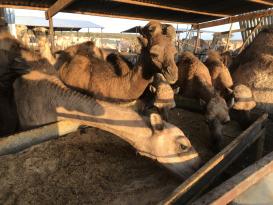In Somaliland, the camel is superlative in every respect: it is culturally iconic, socio-economically essential, and the country exhibits the highest dromedary density worldwide. The relationships between humans and camels manifest in daily interactions and include, extensive knowledge, close affection, and culinary preferences for its milk and meat. Moreover, what makes this a singular and topical case is the transformation of these human-animal relations in the centre of current intricately entangled social and ecological forces of change.
The internationally not yet recognised fully-fledged 'de-facto' Republic of Somaliland is entrenched in a politico-economic fragile position, despite its growing economy due to African-Asian trade relations and diasporic investments. Besides, since the Somali civil war, the country is experiencing migratory and demographic shifts, altering the social fabric and ways of life. Ecological change in Somaliland is entwined with the social dynamics. Climate change entails changing rainfall patterns, causing more frequent droughts, and environmental degradation is exacerbated due to resource overuse. Every single aspect of these dynamics leaves its marks on human-camel relations.
This focus situates the study in the field of transforming human-environment relations. Specifically, it examines the emblematic pastoralist duo of the semi-arid Horn of Africa living through ecologically and socially changing times. It takes a micro-perspective on direct interspecies interactions, mediated through skilled practices, and analyses the altered lives, roles, and agency of camels and humans. The technical, material and social strategic adaptations are understood as conjoined efforts of human-camel socialities. This "more-than-human" approach acknowledges the social and transformative role of animals in human lives.

Caption Text: Camels in a zero-grazing farm near Somaliland’s capital Hargeysa feeding on an imported corn soy blend.
Source: Raphael Schwere.

